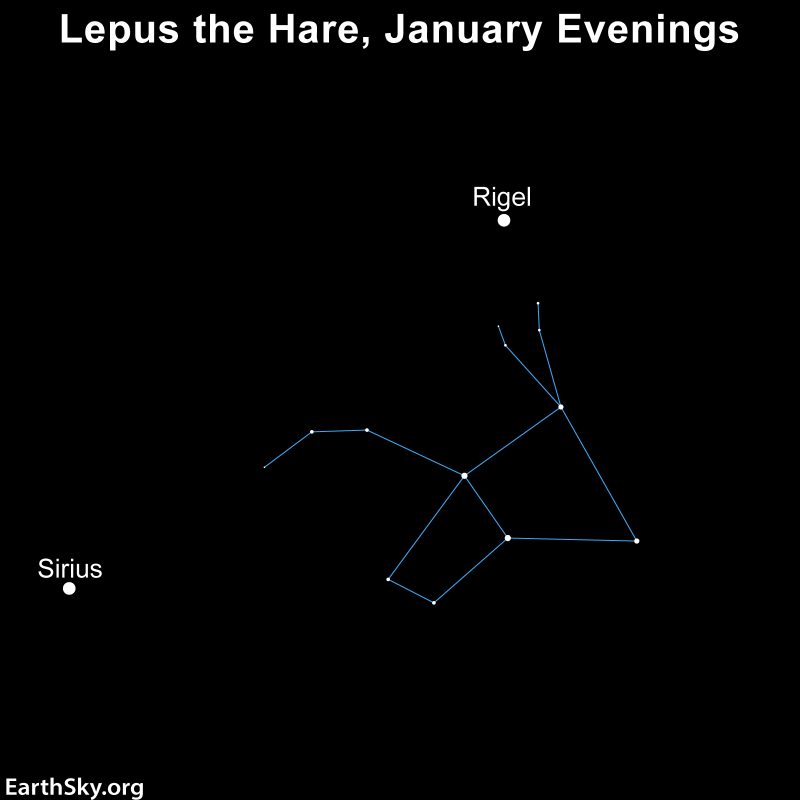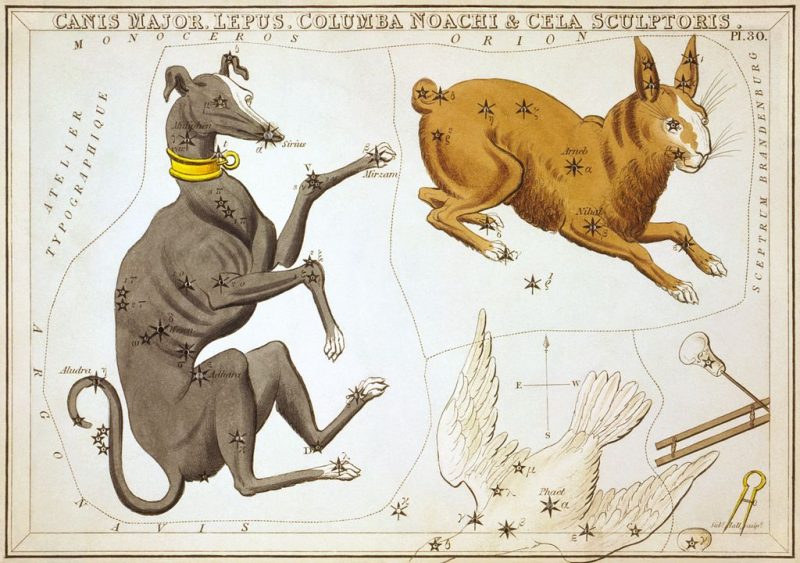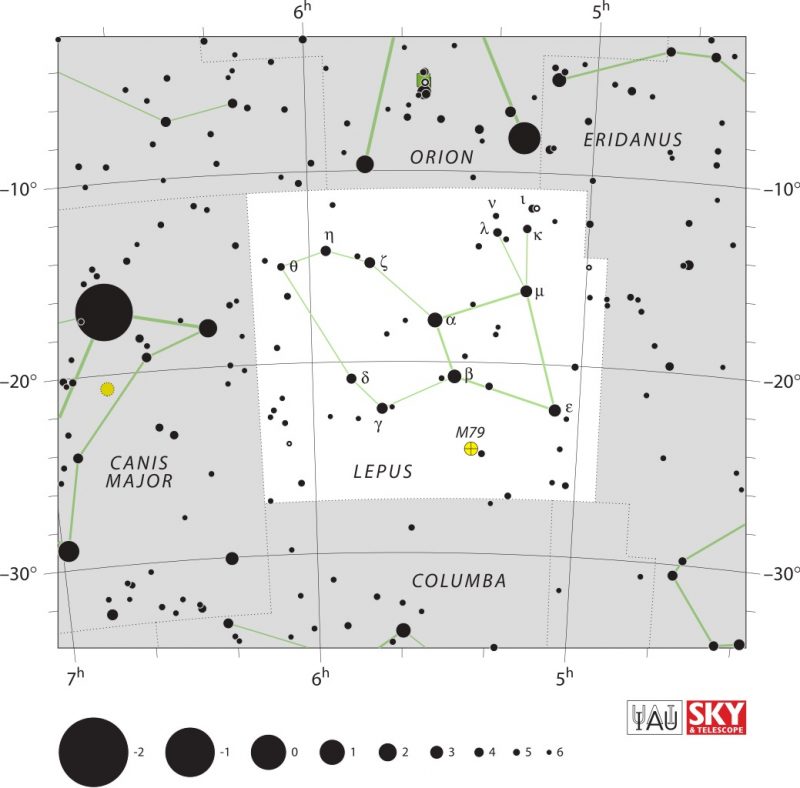
Lepus the Hare is a constellation that brushes the southern horizon in winter months for observers at high latitudes in the Northern Hemisphere. The Hare is under the feet of Orion the Hunter and beside Orion’s hunting dog, Canis Major. Lepus will move from the southeast to the southwest over the course of each winter night and during the winter season. For Southern Hemisphere observers, Lepus cuts across the sky in an arc that passes nearly overhead in January.
The 2022 lunar calendars are here. A few left. Order yours before they’re gone!
The mythology of Lepus
Lepus the Hare is a constellation known since ancient times. Some myths say that nearby Canis Major the Greater Dog pursues the rabbit across the sky. Others say that the winged messenger god Hermes placed the speedy rabbit in the sky as an honor.

The stars of Lepus the Hare
The 2nd and 3rd magnitude stars of Lepus look a bit like a pinwheel with stars streaming out from its center. Do the stars form the shape of the limbs or ears of a rabbit to you? The brightest star in this pinwheel is the star at the center, Alpha Leporis. Also known as Arneb, Alpha Leporis is magnitude 2.58 and shines from a great distance of 1,284 light-years. The next brightest star in Lepus is three degrees south of Alpha. Beta Leporis, or Nihal, is magnitude 2.81 and lies almost 10 times closer than Alpha, at 160 light-years. No other stars in Lepus have formal names.

Lepus’s globular cluster
Lepus holds one Messier object, M79. M79 is a globular cluster, a huge group of ancient stars that orbits the Milky Way. You can find it by using the stars Alpha and Beta. Draw a line from Alpha to Beta, which will be about 3 degrees in length, and then continue the line straight south for 4 degrees until you come upon the 8th magnitude globular cluster. You can spot it in binoculars from a dark sky, but it looks even better in a telescope.
M79 lies about 40,000 light-years away from Earth but 60,000 light-years away from the galactic center. Its location is unusual for a globular cluster. Most globular clusters are closer to the galaxy’s core than we are, orbiting the general bulk at its center. But M79 is farther away, on the outskirts of the galaxy. This discovery leads scientists to believe it is actually an extragalactic cluster.
Some scientists believe the globular cluster M79 once belonged to a neighboring dwarf galaxy that the Milky Way ate. Other believe the dim, dispersed dwarf galaxy still exists just beyond the Milky Way but that it will soon intermingle and become part of the Milky Way’s stars.

Bottom line: Lepus the Hare is a constellation that lies below Orion. You can best spot it on January evenings. It’s home to globular cluster M79.
Read more about a discovery in Lepus: Have astronomers found a hyper-volcanic exomoon?
The post See Lepus the Hare in January first appeared on EarthSky.
0 Commentaires